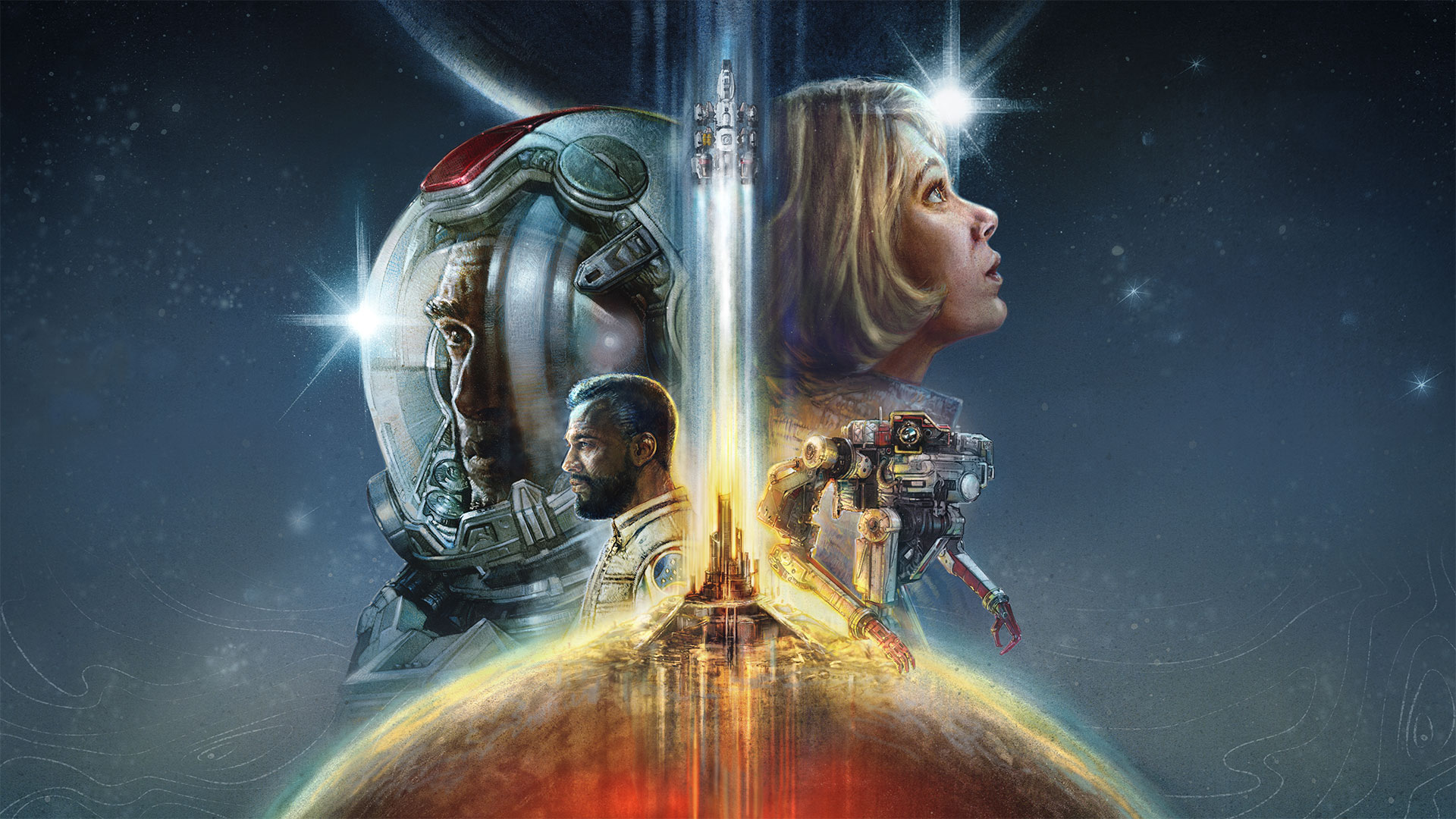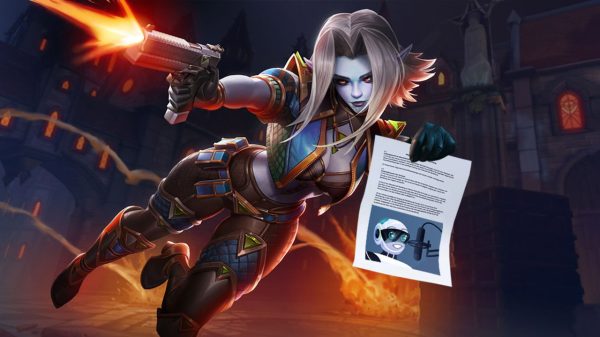Starfield is about space. A sprawling science-fiction epic that sets you loose among the stars to define your own path on a macro and micro level, Starfield, more than any Bethesda title before it, is about the player’s expansion and retraction of their own play space. Across the seemingly endless hours you could pour into it, Starfield gives space; space to traverse, space to ignore, space to be yourself, space to be someone else, space to simply be. The things it chooses to put in this space land with dramatically varying degrees of success, the game being both the studio’s most polished work to date and home to some of its weaker choices. And yet, that enigmatic space, that void, called to me all the same.
Not unlike an intergalactic engine slowly whirring to life, Starfield takes some time to truly make its jump. Bethesda’s introductory missions have always been a little clunky, often tasked with rapidly onboarding you to its latest fantastical setting through some contrived set of tutorials and exposition, and Starfield sets a record. Beginning life on a backwater mining planet in the employ of one of the galaxy’s unsavoury corporations, your humdrum life is upended when you uncover a strange, metallic object buried deep in the planet. This Artifact, as you’ll come to know them, is the first of Starfield’s many genre shortcuts; a metaphysical object that points you to the stars in search of something greater than yourself, likely left behind by some unknown, advanced alien race. It’s not cheap, as such, but it is remarkably unremarkable as far as calls to adventure go in the genre.
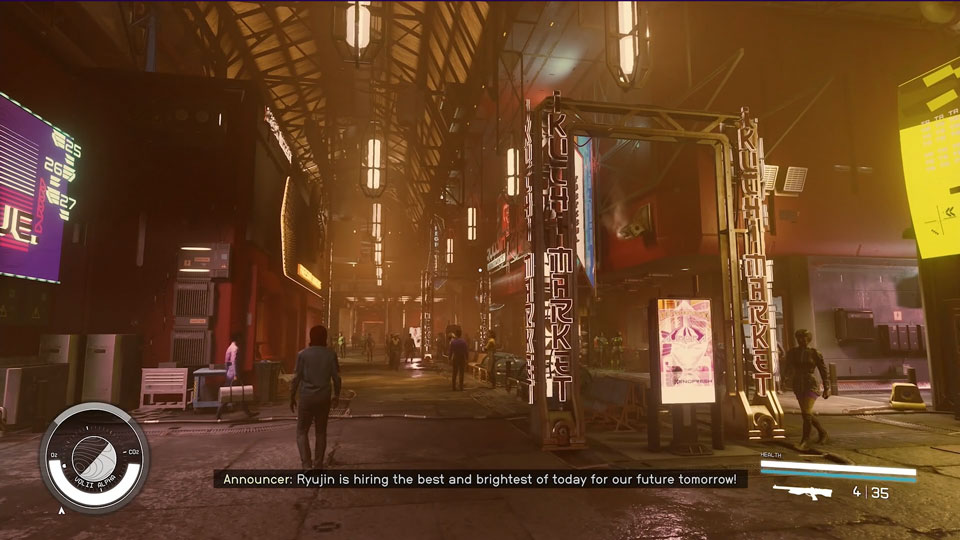
Starfield’s authored locations are massive and inviting
Starfield, like most Bethesda games, is ostensibly about the freedom to choose your own path. Like those introductory missions though, I’ve always found this to be a somewhat clumsy promise, these games often locking essential mechanics behind the core path. Skyrim is huge, but my opening hours always saw me running those same few quests until I could get the Shouts, begrudgingly nodding along to that game’s dreary self-seriousness until it would let me use my voice to upset every dining table in the realm. Starfield also bundles many of the game’s best mechanics into its main questline but finally finds a way to make the path to them genuinely compelling, or at least easily ignored. Constellation, the game’s main faction and player benefactor, drops the portent and instead offers you a home among a group of well-meaning, mismatched dorks.
Constellation’s only defining trait is its pursuit of knowledge, specifically whatever the Artifacts can offer humanity. This is Starfield’s way of fast tracking you to your own ship and crew, as Constellation is largely happy for you to do your own thing out in the galaxy provided you eventually come home and drop off whatever Artifacts you find. Starfield giving me the ability to organically shift between roleplaying styles as I came and went from Constellation was liberating; the dubious shit I did in the far reaches of space to impress a crime syndicate mattered little to Constellation. This isn’t freedom from consequence. The rest of the galaxy will most certainly notice you, but Constellation’s indifference is both baked into the writing of the faction and a generous allowance for the player.
Much ado has been made about Starfield’s thousand-odd planets, scattered across dozens of star systems to explore to your heart’s content. It was always a bold premise, especially for a studio that earned its place designing large, but inherently limited play spaces. The transition to freeform, galactic roaming is about as wobbly as could be expected then. An oddly constructed series of emotionally resonating highs and plodding, mechanical lows, Starfield’s space is primarily navigated via menus. Almost everything you do to move through Starfield is done by drilling through UI elements; the massive galactic map offers an array of systems to jump between provided your fuel can handle the trip, but you’re just as likely to skip that screen entirely by holding X on a quest log and fast travelling lightyears in seconds, regardless of fuel or proximity to goal. It brutally compacts scale in service of ease of use, a compromise I appreciate but can’t quite square away with the game’s thesis. At times I deliberately avoided fast travel to better immerse myself in the galaxy’s size but regardless, Starfield’s exploration is always linked to menu diving.
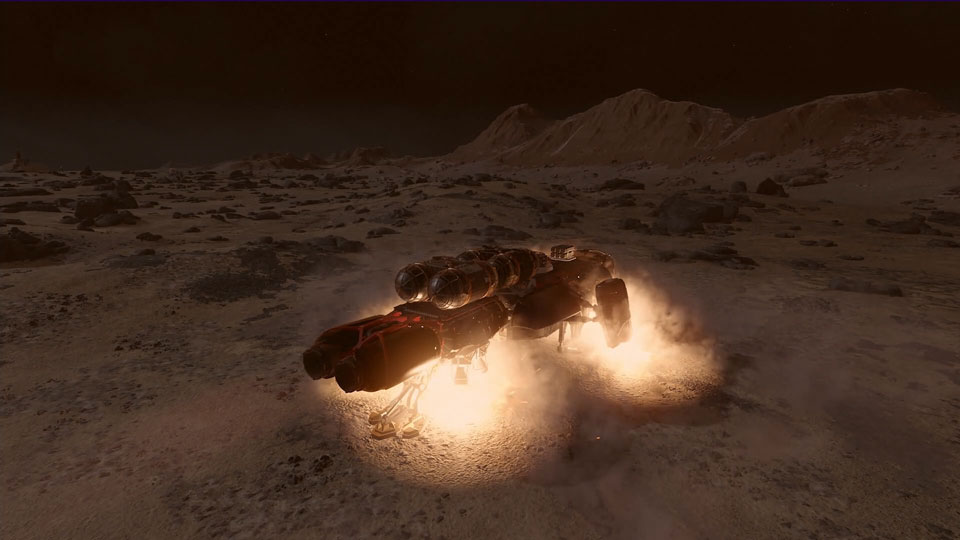
Crafting your own ship is fun, easy, and entirely optional
Your path through the stars is carved by your ship, a fully customisable, battle-ready houseboat that Bethesda has smartly made almost entirely optional. Constellation will give you a free ship to kick things off, with more than enough room to recruit a whole host of NPCs as your crew and the basics of ship traversal and combat covered. Jumping into a system puts you in orbit over a planet of your choosing and gives you a contained area to fly around in, engaging in dogfights and chance encountering passing ships. There’s a decent sense of heft to these spaces, your ship moving markedly differently depending on its build, and the thrill of seeing something you’ve spent hard-earned credits on tearing through asteroid belts and foes never really gets old.
Depending on how you’ve allocated the resources gathered throughout the galaxy, you can build your ship into whatever space fantasy you desire. The game’s NASA-punk (an awful name) aesthetic and technology means you’re never going to build a sleek machine but by the end game I had managed to strip my ship down to the basics to optimise manoeuvrability and aggression. Dogfighting is likewise rarely ever sleek but again, that heft felt among the stars adds a nice layer of physicality to collisions. You can adjust your engine’s distribution between several systems in real time, bolstering shields and lasers or boosters and jump drive depending on your needs. Still, the limitations of space creep back in as you’re fairly restricted here too; you can’t actually fly to another planet’s orbit, align your ship to dock or breach an atmosphere, all of this is done through submenus and hard load screens.
Once you’ve got boots on the ground though, Starfield opens up in fascinating and largely successful ways. Bethesda’s penchant for considered and inviting play spaces roars to life here, the handful of big name locations and planets I visited each offering a unique twist on sci-fi genre staples. The verdant green and clean silver of the core worlds, the grimy back streets and neon-lit bars of the outer rim, the dilapidated research facilities and colossal, floating cities in the stars. It all just works, rarely ever surprising, but delighting all the same. More times than I can count I would find myself content to just roam around these spaces, constantly impressed by how layered they often were, exploration almost always yielding a new nook to plunder or NPC to observe and chat with.
Bethesda deploys a tremendous degree of trust in the player to define this experience for themselves
The procedurally generated worlds, which make up the bulk of Starfield’s marketed planet diversity, are far less compelling. There’s a strangeness at the core of these spaces, the game’s design clearly leaning into the barren and empty nature of semi-realistic space exploration as a base ethos but subsequently populating those same spaces with automated content. One mission tasked me with building a secure base of operations on a remote world of my choosing, so I charted a course to a distant system, found an aesthetically pleasing but empty world and used the orbital view to pick a spot of land by the water. Upon landing though, Starfield populated the surrounding area with an array of things to do, one of which was a fully operational mining outpost flooded with goons. It’s immediately immersion breaking, and a greater hurdle to overcome than the sometimes pleasant but often dreary landscapes the game generates.
These spaces can also play host to a settlement of your design, an extension of Fallout 4’s base building that, much like ship customisation, is entirely optional. Lessons learned from previous attempts mean that this controls fairly well, offering a clean camera overview of your structure and myriad options for aesthetics, defences, and utilities, but when the authored spaces are as compelling and sprawling as Starfield’s, I never felt the need to call any one planet home. Instead, I made peace with my ship being my only true constant in the galaxy, and Starfield let me without so much as a blink. That both of these systems are as robust, and optional, as the other is a small wonder, Bethesda deploys a tremendous degree of trust in the player to define this experience for themselves.
That trust in the player ripples through Starfield’s quest design too as Bethesda veers away from Fallout 4’s action-heavy leanings and return to its talky-RPG roots. There is a lot of dialogue in Starfield, with character conversations always running deeper than you’re expecting if you put in the time to poke and prod. I had been travelling with one of my companions for hours before he revealed he’d once been married and lost his husband during a war, information that in turn unlocked a whole new world of opportunities between us. You’ll still find your fair share of humdrum archetypes in the galaxy but solid voice work elevates most of it and if someone’s vibe really hits you wrong, you can always rob them or worse. That said, I had such grand designs on being a cruel bounty hunter, and while the game would often let me, the strength of its character writing and tone always pulled me away from the cartoonish evil and convinced me to care, just a little.
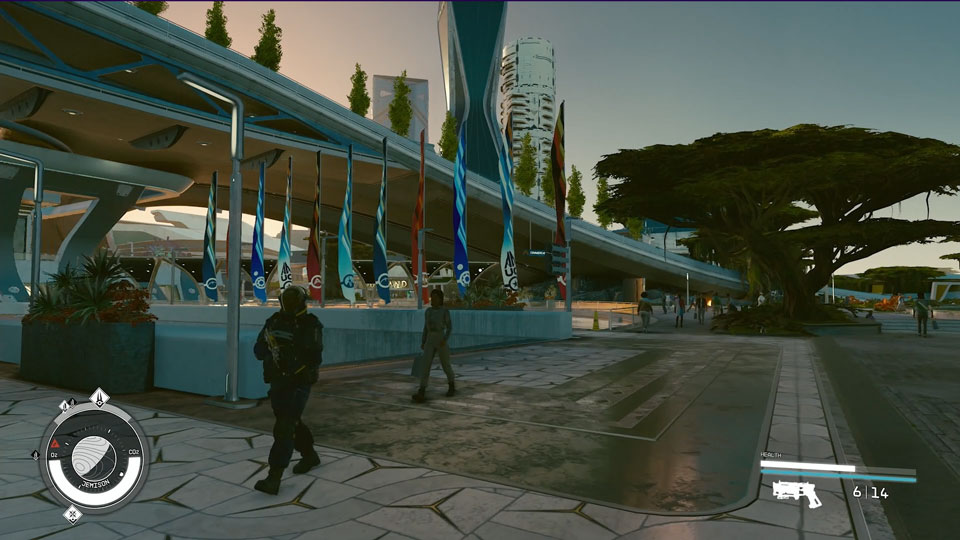
Starfield has a density of NPCs and people to talk to
That investment in the worlds of Starfield often paid off in surprising ways during the game’s quests. Constellation’s efforts to collect the Artifacts yields both compelling story moments and a revolving door of planet-hopping fetch quests to complete at your leisure. The hunt for Artifacts will take you to most corners of the galaxy and in turn expose you to countless new quests, some organically flowing from your choices and some only found by exploring and asking the right questions. There’s also a litany of busy work to do if you want some low stakes adventuring, passive conversations in the world constantly adding leads to your quest log that you can follow or ignore depending on your mood. By the time I hit the credits, I had pages of quests left to do, most of them emerging along the path of a previous quest that I assumed was quick but had actually backdoored me into a whole other subplot. It all locks into place to be both inviting and easy to lose yourself in.
Starfield is still a hostile place though, humanity’s voyage into the stars marred with war, capitalism and plunder. The NASA-core (mine’s better) aesthetic informs most of Starfield’s technology and design work, its sci-fi setting almost always grounded in tactility and unassuming machinery. It’s not the most exciting art direction but it is appropriate, and textually relevant too in some genuinely cool ways. The adversity of these worlds is softened by stunning skyboxes and charming characters but you’ll still need to get comfortable with violence eventually. Starfield offers you a diverse arsenal of weaponry and tricks to deploy in combat, all of which look and sound great but lack satisfying punch. The combination of old world gun design and futuristic leanings make for a great pairing, but gunplay tends to feel a bit weightless, your shots often gliding through foes. Bethesda’s gunplay has always leaned more arcadey and Starfield can often provide short bursts of that particular type of fun but prolonged encounters expose the game’s wobblier grasp on combat.
Outside of specific side-quests, casual dungeons and key moments though, you can often avoid combat if you’ve specced your character the right way as Bethesda returns to form with player options. Your proficiency with weapons, like most things, can be improved through the game’s skill tree. Starfield has a semi-buildless approach to roleplaying, instead allowing you freeform control over the skill tree’s various pathways into specialised abilities in Physical, Social, Combat, Tech, and Science.
Within each tree you’ll find tiered lists of skills that in turn can be upgraded four times by completing certain associated tasks. Pistol kills for pistol handling, passing charisma checks and so on. You can mix and match but certain skills surrounding ship control, baseline health, and planet traversal tools like the jump pack feel essential and spending points in these slows down your roleplaying potential at times.
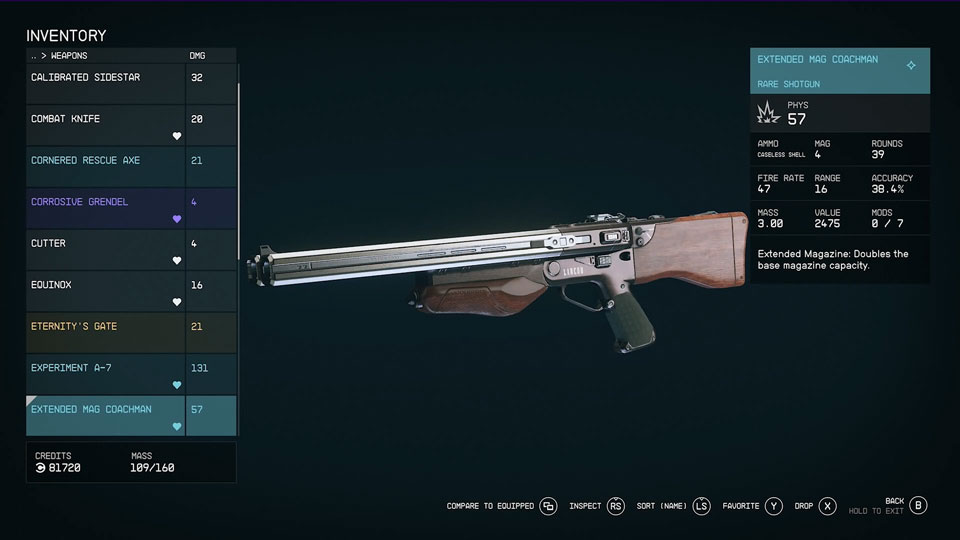
Guns often look at a lot cooler than they feel
Final Thoughts
Starfield’s space, and how it uses it, is never cleanly defined. A game as clumsy as it is charming, as fiddly as it is intuitive, as banal as it is inspired – Starfield is many things at once, with its competing ideas and mechanics hanging together by vibes and a dream. For all of my criticism, it’s undeniable how much Starfield captured my imagination and even now I want to jump back into my ship and head back out there. Bethesda’s signature magic has been scattered across the stars here, its light swallowed by some far reaching recesses, but also finding thrilling new ways to refract through space.
Reviewed on Xbox Series X // Review code supplied by publisher
Click here for more information on WellPlayed’s review policy and ethics

- Bethesda Game Studios
- Bethesda
- Xbox Series X|S / PC
- September 6, 2023 (early access launch September 1)



One part pretentious academic and one part goofy dickhead, James is often found defending strange games and frowning at the popular ones, but he's happy to play just about everything in between. An unbridled love for FromSoftware's pantheon, a keen eye for vibes first experiences, and an insistence on the Oxford comma have marked his time in the industry.





